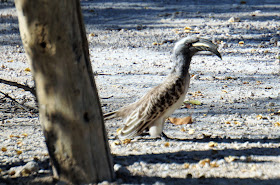Never in my wildest dreams did I ever think I would travel to Namibia. Of course, there wasn't even a Namibia until 1990. From 1915 to 1990, this area was known as South West Africa and was under South Africa's jurisdiction, and before that it was a German colony.
Today there are about 2.6 million people living in Namibia, giving it the second lowest population density of any sovereign country in the world (behind Mongolia). The GDP/person in Namibia is about 1/5 of what it is in the United States. The key contributor to the economy is the mining industry. Namibia is one of the chief exporters of uranium in the world and is also known for its deposits of gem diamonds. Ecotourism is a growing segment of the economy.
The country's name comes from its largest desert: the Namib Desert. Namib means "vast place." The Namib Desert is about the size of South Carolina, and the country of Namibia is about 1/12 the size of the U.S. or twice the size of California.
The capital and largest city in Namibia, Windhoek (population 325,000), lies pretty close to the Tropic of Capricorn:
We flew from Cape Town to Namibia's largest international airport, the Hosea Kutako Airport, located about 30 miles outside Windhoek:
The geography below us as we approached the airport illustrates the fact that Namibia is the driest country in sub-Saharan Africa. It looked desolate and unoccupied:






























